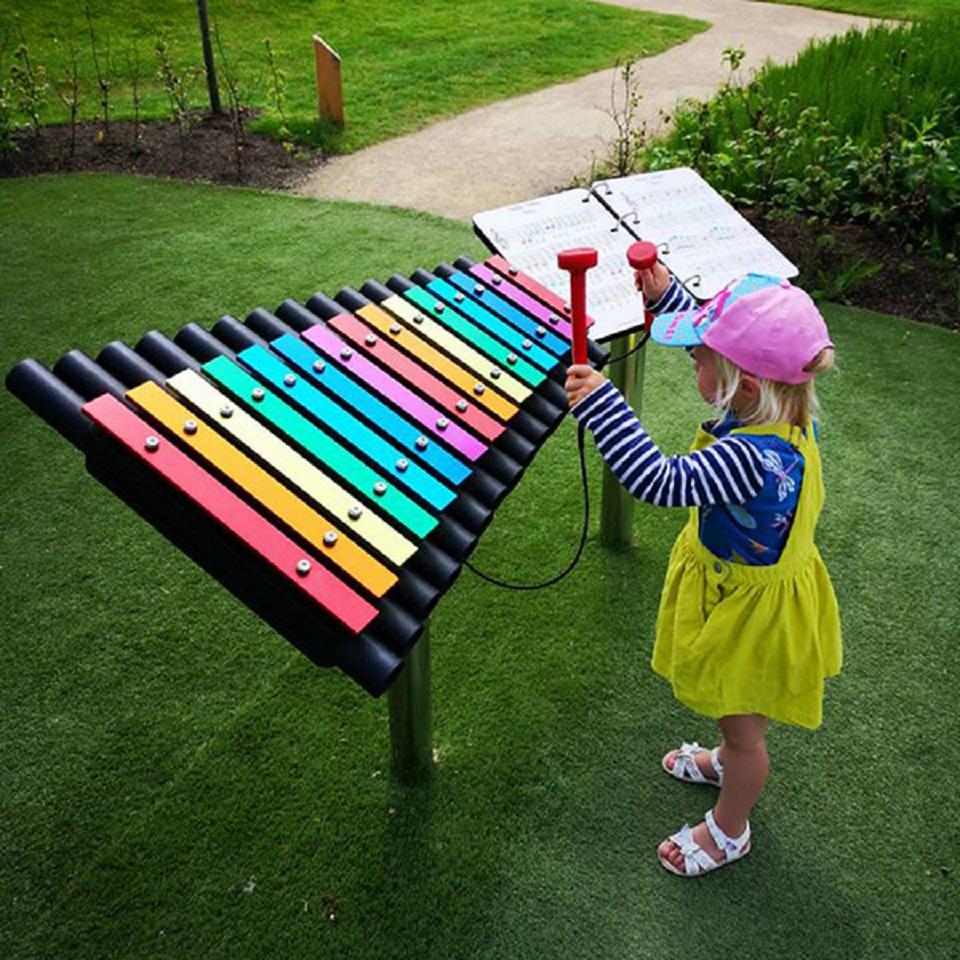
Hearing Houses
 The National Trust for Scotland has produced Hearing Houses: Ten Tips to Inspire Visitors Using Music and Sound for its own staff, and has kindly agreed to share it with us. A downloadable version appears at the bottom of the page.
The National Trust for Scotland has produced Hearing Houses: Ten Tips to Inspire Visitors Using Music and Sound for its own staff, and has kindly agreed to share it with us. A downloadable version appears at the bottom of the page.
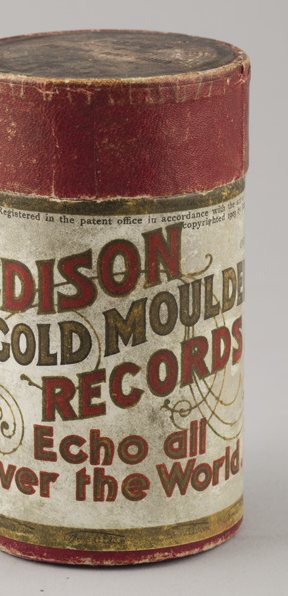 How to use music and sound to create unforgettable experiences and encourage repeat visits
How to use music and sound to create unforgettable experiences and encourage repeat visits
Our properties are full of objects that make sounds, which once brought those interiors to life. These sounds would have given our houses their unique qualities, revealing the individual tastes, characters and routines of the people who lived and worked there.
We have musical scores, wax phonograph cylinders, vinyl records, CDs and tape recordings, clocks and timepieces, servants’ bells, pots and pans, gongs and telephones – all of which were silenced when properties came into the care of the National Trust for Scotland.
The daily and hourly sounds that once marked the passage of time, heralded visitors or recalled significant events have been replaced with a deadly silence. Yet we can use many of these sound objects to enhance the visitor experience and bring back atmosphere and a sense of life to our properties – so long as we do so with care.
Everything we have in our properties tells a story – and musical instruments and clocks, no matter how precious and fragile, can do the same.
We know that to attract bigger and more diverse audiences, we need to change the way we show our collections. Bringing them to life through creating more immersive experiences, which include sounds and music, can help us to do this. Children’s voices will bring a historic birthplace cottage to life. A kitchen will be enlivened by clanking pots and pans, a ‘cook’ shouting orders to a ‘scullery maid’ and rushing footsteps on a hard, bare staircase.
Music and sound can also help to create different atmospheres at different times of the day or year, encouraging those who have already visited to return. As a result of Project Reveal and a recent comprehensive survey of our musical objects, we now know much more about our collections. This is therefore a good time to use musical instruments and sound to recall the lives of those who once lived and worked in our houses, and to create a more immersive and enjoyable experience for
visitors.
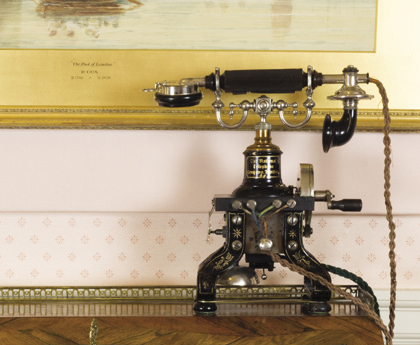
MAKING IT HAPPEN
1. MUSIC AND MUSICAL INSTRUMENTS
Do liaise with your regional conservator to establish which musical instruments at your property can be played – the same is true of gramophone players, tape recorders and telephones. If the original cannot be played, explore other options such as prerecording for play on a newer system. Are there performers or musical groups in your area who could form a special working relationship with your property or provide a one-off performance? For practical steps on using musical instruments, please see Please Play! Five steps to using historic musical instruments.
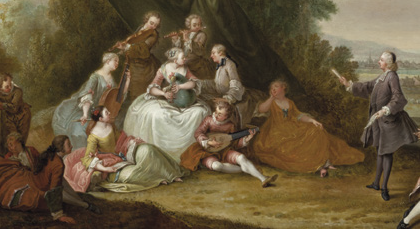 2. SPECIAL THEMED TOURS
2. SPECIAL THEMED TOURS
Could you offer a special tour through music, sound or dance? If you can link your musical scores, instruments or timepieces to particular individuals, could you offer a special tour through that person? This would provide an opportunity for guides to discover more about our collections and focus on particular musical instruments, recordings of music or sounds commonly heard in your property throughout its past.
3. MOVING VISITORS PHYSICALLY 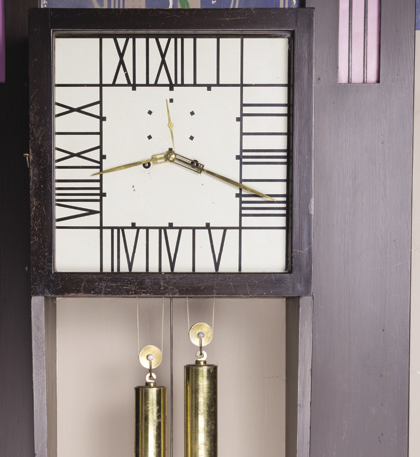
What can visitors DO at your property? We need to move from passive experiences so that we engage visitors with their mind and body. Do you have a space where your visitors could learn a historical dance (your curator can put you in touch with experts in this field)? Could they sing along around a piano, as house guests would have done? Can they take part in Christmas carols or a stirring song that recalls a major event that would have punctuated the life of your property – a christening, a death, a marriage, the start or end of a war? In this way we can make our properties feel like a real home, both ‘above’ and ‘below’ stairs.
4. MOVING VISITORS EMOTIONALLY
Through music and sound we can also move visitors emotionally, and through objects uncover a more honest and rounded story of those who inhabited our houses. This could be revealing the circumscribed lives of women or the relentless labour
of men and women in service, whose days were ruled by strict routines. We can also explore the privileged lives of those who could acquire sumptuous possessions, their vast wealth made possible often only through the subjugation of others, sometimes thousands of miles away. For example, perhaps you could arrange a performance or play a recording of one of the many traditional Scots songs that address the plight of women.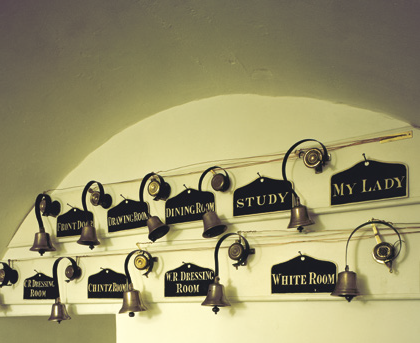
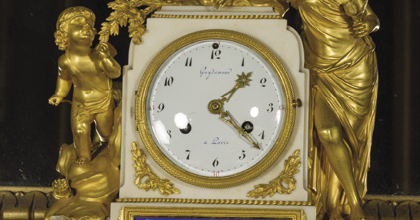
5. TAILORED TOURS
Encourage guides to adapt tours to different audiences – sound and music offer wonderful opportunities to do this. This could be the theme of a tour or as a moment within a general tour, when a particular character is brought to life through sound – a maid’s footsteps rushing up a back stair, the clanking of pots in a kitchen, clopping hooves heralding the arrival of a carriage, a child reciting bedtime prayers, or the crackling sound of a real fire (which may be supplementing the Opti-myst one in the grate).
6. INVOLVE VISITORS
Whatever we do to improve the visitor experience should not harm what makes our treasured things special. But musical instruments were made to be played and clocks to tell the time! Tell people how their visit helps to make this possible – visitors find the work to care for collections fascinating, so make this part of their experience rather than something that’s done behind closed doors. If any tuning of instruments or conservation is happening at your property, allow time for your expert to engage with visitors and explain what they’re doing. If this can’t be done when they’re working, could they give a talk on their work at a later date?
7. FIND DIFFERENT WAYS TO USE THINGS
The Wallace Collection in London has some very precious clocks in its collection that are too fragile and valuable to have working, but in some cases they have been run for a short time and the recording of their ticking and chiming is then played from a mechanism inside the clock. Such clever solutions can be a way to bring back the magic of a very important piece that otherwise would remain silent. The added beauty of this solution is that the sounds can then be linked to online access to bring the story of a precious clock or musical instrument to life.
8. WORKING TOGETHER
You may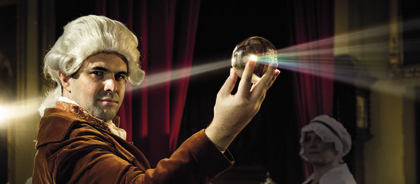 well have members of your team with a special interest in or knowledge of clocks and music. Empower these people by encouraging them to form connections with performers and interest groups who can engage with these aspects of your collections or to manage the care and winding of your clocks. Encourage everyone in your team – staff and volunteers – to be creative and suggest opportunities to bring your property to life through sound effects, music and dance.
well have members of your team with a special interest in or knowledge of clocks and music. Empower these people by encouraging them to form connections with performers and interest groups who can engage with these aspects of your collections or to manage the care and winding of your clocks. Encourage everyone in your team – staff and volunteers – to be creative and suggest opportunities to bring your property to life through sound effects, music and dance.
9. EMBRACE THE UNEXPECTED
We have LPs from the 1970s and 80s at Falkland Palace and wax cylinder and tape recordings at Newhailes House. Do your music collections allow you to introduce another period of the life of your property to visitors? The same may be true of soundscapes – we know that a radio in the kitchen at Inverewe played Gaelic songs. Do you have a similar unusual sound opportunity? We should take care to ensure that any music or sound that we introduce is based on fact – so that it
enhances our understanding of the real history of a place and its people. However, introducing new sounds and music can also be exciting – could your property inspire a composer or performer to create a new work? Or you could consider inviting a composer on a residency to our property – your curator can help you with a brief and suggested outcomes.
10. AVOIDING THE 'BAD' NOISE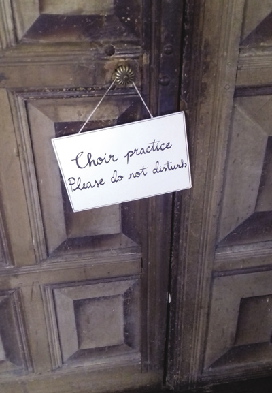
We live in a noisy world and are accustomed to sounds, so when we enter a very quiet space it can be intimidating. Sounds can have serious impacts on our health and wellbeing – both positive and negative. As Florence Nightingale memorably put it: ‘Unnecessary noise is the most cruel abuse of care’. To ensure that you and your colleagues are not driven mad by simple repetitions of the same sounds, recordings should be ‘non predictable’ and on long repeats that provide variety. To make sounds believable the quality of sound projection must be excellent, and the pieces well performed and well recorded (be sure to check that you’re not infringing copyright when playing pre-recorded music). Seek feedback on music and sound – is it an enhancement or an irritation? This can then be used to refine what you’re offering and should be a continual process.
FINALLY
Remember that clocks can be easily damaged if moved without due care and expertise, and that some musical instruments and other sound objects are fragile. If you’d like to make any changes which involve moving or using any items please get in touch with the Curatorial & Conservation Services team and the Collections Services team, so they can advise on how best to do this. We need to record anything that is moved so we can find it in the future, and to carry out risk assessments where necessary.
Here are some of the people who’ll be able to help you:
CONSERVATOR
To move instruments, clocks and objects, and advise on appropriate use, conservation and upkeep, such as tuning.
CURATOR
To think of good music and sound stories specifically related to your property and the people who lived and worked in it and that are appropriate for a particular instrument. Your curator will also advise on guiding and programming music and sounds, both as part of what you do now and as a way of increasing your visitor offer.
ARCHAEOLOGIST
To discover the hidden histories of your property and advise on related music and sounds.
POLICY TEAM
To advise on Trust policies and approaches to access, interpretation, conservation, copyright, etc.
COLLECTIONS SYSTEMS MANAGER
To give object information and keep track of collections being moved.
REGISTRAR (LOANS & DISPOSALS)
To give guidance on which items are on loan and advise of any restrictions on handling or use, and to liaise with lenders if you’d like to include a loaned object in your soundscape.
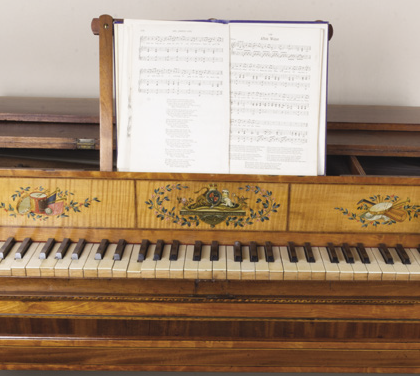
Sound Heritage would like to thank Jennifer Melville, Head of Curatorial and Conservation Services for the National Trust for Scotland, for sharing these great suggestions with us. For a pdf of the Hearing Houses brochure, follow the link below.
